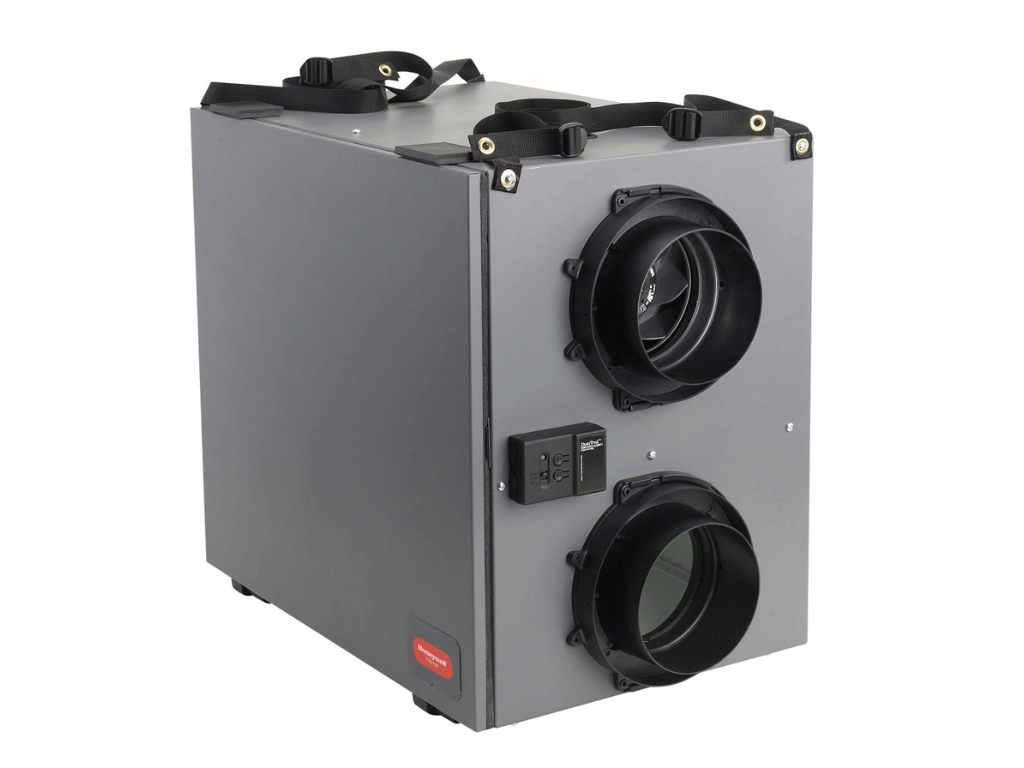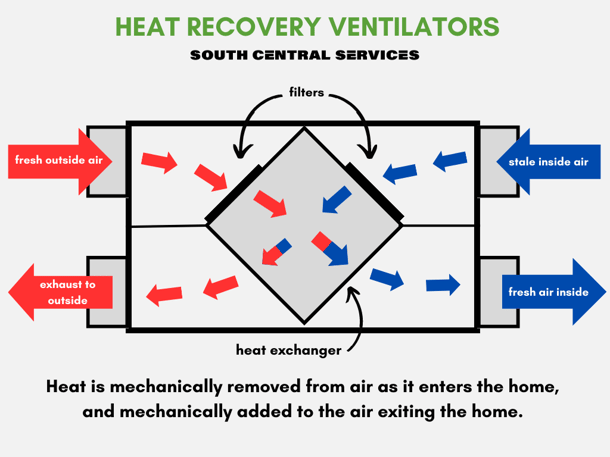Search for topics or resources
Enter your search below and hit enter or click the search icon.

You heard about heat recovery ventilators in passing but still aren’t sure what they are. Would this machine make your home more comfortable? Could it make the house more energy-efficient? Can you even afford it?
South Central Services began in HVAC and refrigeration, installing over a thousand systems. Proper ventilation is what inspired us to pursue spray foam insulation, which is what we install now. With our background in these two areas, we understand their relationship and when an HRV might be suitable for a building.
By the end of this article, you will understand:
Don't have time to read right now? Check out everything you need to know at a glance.
Heat recovery ventilators (HRVs) are equipment used to process heat in the air through mechanical ventilation. HRVs can be installed as part of an HVAC system. An HRV is a box connected to ductwork that sends stale indoor air outside and brings fresh outdoor air inside.

The HRV processes and conditions air before bringing the air inside. If the air outside is hot, the core of an HRV removes the heat from that air. The removed heat is transferred to the stale indoor air leaving the home.
HVAC systems may struggle to manage unconditioned air that is mechanically ventilated. HVAC systems cannot offer maximum energy efficiency when they work harder to handle variables like temperature differences. An HRV is a companion to the air conditioning unit, removing the heat variable and optimizing performance.
The benefit of an HRV is the control over the quality and temperature of the air entering your home. HRVs improve indoor air quality by exhausting stale and humid inside air and introducing fresh, filtered outside air into the home.
An HRV can also reduce wear and tear on your HVAC system. Air conditioners work overtime to account for temperature differences from outside air. An HRV can do that work before the air even enters the home.
A heat recovery ventilator can process temperature differences between the air entering the home and the temperature of the air in the home. An energy recovery ventilator can process both temperature and moisture.
HRVs are best suited for homes in climates with dry heat. If you live in a humid climate, an ERV would better process the moisture from the outside air. Climate Zone 5 is a relatively humid climate, so homeowners in southern Pennsylvania would benefit more from an ERV.
HRVs are often recommended for air-sealed homes because the home requires additional mechanical ventilation for indoor air quality. You may still benefit from an HRV if your home is not air-sealed. Contact an HVAC contractor to ask if an HRV would improve indoor air quality and save money on energy bills.
The cost of an HRV will vary depending on numerous factors, such as your location, climate, home design, existing ductwork, and the size and type of system.
You should expect to spend a minimum of $1,000 to add an HRV to your HVAC system.
HRVs are manufactured by different companies with different styles, features, and specifications. Our recommendation is to speak with an HVAC contractor about installing an HRV. A professional contractor can explain your product options, give a price estimate, and take care of the installation.
If you’d like to do more research on HRVs before contacting a HVAC contractor, we recommend Honeywell Home. You can find product specifications on their website.
Heat recovery ventilators (HRVs) can be a valuable addition to an HVAC system. The ability to control the temperature and quality of outside air through mechanical ventilation leads to better indoor air quality and energy efficiency. While HRVs are most often recommended for air-sealed homes, homes experiencing air leakage could still consider these systems to improve indoor air quality.
If you are curious about air leakage in your home, you may want to consider a home energy audit.
Want to learn more about air-sealing? Check out these resources.
Featured image courtesy of Honeywell Home.
Disclaimer: While we strive to publish information accurate to building science, local building codes and standards supersede our recommendations.
Kilian has co-owned and operated South Central Services for 8 years. He is passionate about community involvement. In his spare time, he enjoys being with his family, playing ice hockey, and going fishing with friends.
Topics: